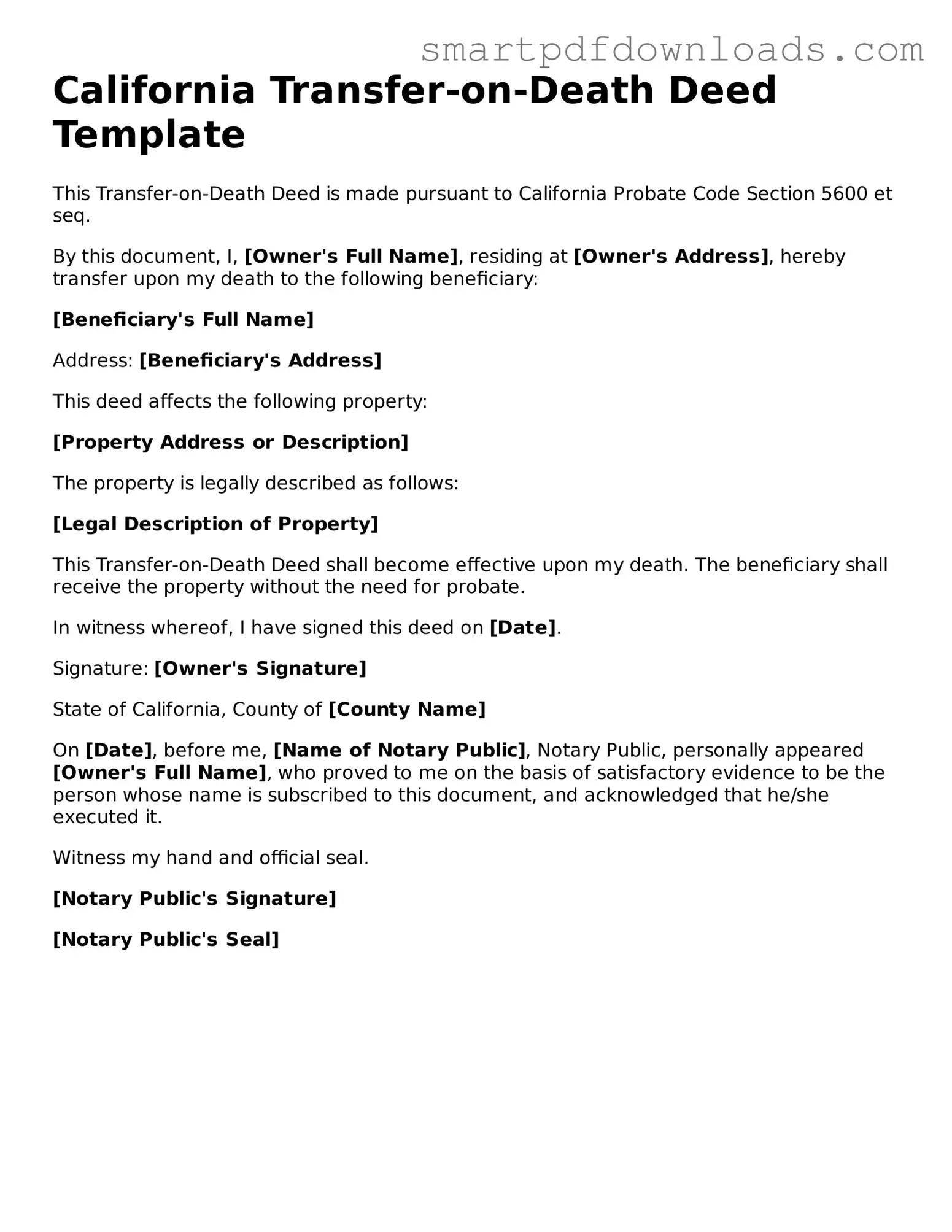California Transfer-on-Death Deed Template
This Transfer-on-Death Deed is made pursuant to California Probate Code Section 5600 et seq.
By this document, I, [Owner's Full Name], residing at [Owner's Address], hereby transfer upon my death to the following beneficiary:
[Beneficiary's Full Name]
Address: [Beneficiary's Address]
This deed affects the following property:
[Property Address or Description]
The property is legally described as follows:
[Legal Description of Property]
This Transfer-on-Death Deed shall become effective upon my death. The beneficiary shall receive the property without the need for probate.
In witness whereof, I have signed this deed on [Date].
Signature: [Owner's Signature]
State of California, County of [County Name]
On [Date], before me, [Name of Notary Public], Notary Public, personally appeared [Owner's Full Name], who proved to me on the basis of satisfactory evidence to be the person whose name is subscribed to this document, and acknowledged that he/she executed it.
Witness my hand and official seal.
[Notary Public's Signature]
[Notary Public's Seal]
